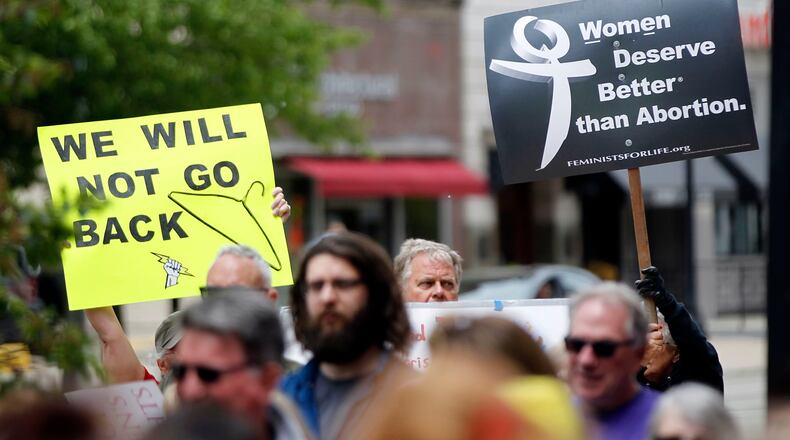The Women’s Med Center in Kettering and Planned Parenthood of Southwest Ohio need to have a written transfer agreement with a hospital to operate in the state. The clinics don’t have these agreements and have been operating under waivers signed by doctors affiliated with public medical schools, but the new law requires the clinics to find doctors not affiliated with public institutions to sign the waiver paperwork.
The overwhelming majority of OB/GYNs in the Dayton region work for one of the two hospitals systems, Kettering Health and Premier Health, which have not signed the agreement, or are affiliated with the public medical school at Wright State University.
When asked if they might file a lawsuit, a lawyer representing the clinics and a Planned Parenthood spokeswoman said they are considering all of their options.
Ushma Upadhyay, UC San Francisco associate professor, has researched abortion access and said her team has coined the term “abortion desert” to refer to major cities where it is 100 miles or more to travel for an abortion.
If just the Dayton clinic closes, it would be about 75 miles to a surgical abortion clinic in Columbus, and about 55 miles to the Cincinnati clinic. In a December court filing, the southwest Ohio clinics said the Columbus abortion center already has a three week wait.
“It wouldn’t technically be considered an abortion desert, but it is a fairly large city to not have an abortion provider,” Upadhyay said.
If the Dayton and Cincinnati clinics close, that would create a new abortion desert under the definition.
“For residents in Cincinnati, their closest clinic will be Louisville, Kentucky, and there’s only one clinic there, a truly very long wait also, and it is about 100 miles,” Upadhyay said.
The new law is Senate Bill 157, sponsored by Sen. Steve Huffman, R-Tipp City, and signed in December by Ohio Gov. Mike DeWine. The law also creates a new “born alive” requirements that state expands the first-degree felony definition of “abortion manslaughter” to include failing to try to keep an infant born after an attempted abortion alive.
Ohio Right to Life President Mike Gonidakis said only five of the state’s 88 counties have surgical abortion clinics so there’s large parts of the state already with no clinic.
“So it wouldn’t be some cultural shock if another abortion clinic closed, which we hope happens, of course. We don’t believe women need abortion and we don’t believe abortions are health care,” Gonidakis said.
The new state law comes amid fresh challenges to abortion rights in the U.S.
The U.S. Supreme Court is expected to rule later this year on a landmark Mississippi abortion rights case. The 6-3 conservative majority has signaled they are questioning the framework the court has used for 50 years under Roe v. Wade and Planned Parenthood v. Casey.
“If the Supreme Court in June issues of ruling in the Dobbs (v. Jackson Women’s Health Organization) case saying each state can set its own abortion policy, we have a law ready to go to make abortion unthinkable in the state of Ohio so this clinic would have to close anyways,” Gonidakis said.
When clinics close, research indicates that what happens to people seeking an abortion varies.
Danielle Bessett, with University of Cincinnati Department of Sociology, said there’s a well designed UC San Francisco study of people who wanted an abortion but weren’t able to get one compared to those who did have an abortion.
The study found those turned away were more likely to go on to experience economic hardship years later, more likely to to receive food assistance, and more likely to have ongoing contact with an intimate partner who had abused them, among other impacts.
“And just to stress, the barriers to care — across all the research it is very clear — disproportionately affect people of color and those with limited financial means,” Bessett said.
About the Author

